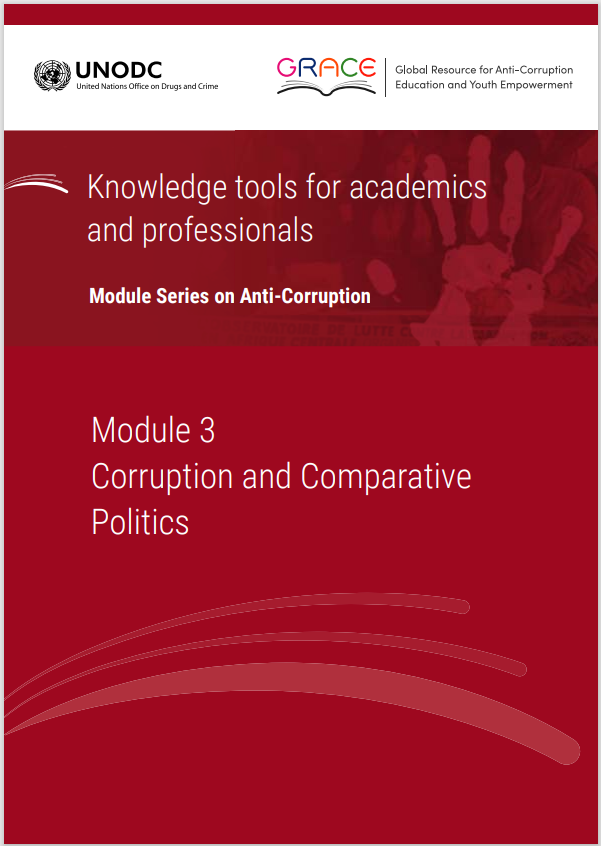This module is a resource for lecturers
Possible class structure
This section contains recommendations for a teaching sequence and timing intended to achieve learning outcomes through a three-hour class. The lecturer may wish to disregard or shorten some of the segments below to give more time to other elements, including introduction, icebreakers, conclusion or short breaks. The structure could also be adapted for shorter or longer classes, given that the class durations vary across countries.
Introduction (10 minutes)
- Briefly introduce the definition of corruption as well as the concepts discussed in this Module 3, such as political systems and Johnston's four ideal syndromes.
Characteristics and differences of certain political systems and specific anti-corruption strategies (40 minutes)
- Drawing on the Key Issues section, discuss the characteristics of democratic, hybrid and authoritarian systems, briefly explain the differences between them and highlight some of the anti-corruption strategies employed in these systems (see ppt slides)
Why is there still corruption in democracies? (10 minutes)
- Discuss with the students the various explanations for voter's ignorance, trade-offs and likelihood not to act in response to corrupt politicians / regimes (see ppt slides)
Syndromes of corruption (30 minutes)
- Introduce the main characteristics of Johnston's syndromes of corruption (10 min) (see ppt)
- The students should give examples for each of these syndromes (10 min)
The politics of corruption and funding options (60 minutes)
- Explain how parties are or can be financed as well as political party regulations and what impact this can have on corruption (15 minutes) (see ppt)
- Conduct Exercise 2 or Exercise 3 (45 minutes).
Case studies from a comparative perspective (30 minutes)
- Watch one of the listed YouTube clips - for example Corruption is Legal in America (6 minutes) or Does South Africa have a corruption problem? (9 minutes)
- Students should assess anti-corruption mechanisms of democratic or authoritarian systems; they should also consider the potential benefits of corruption in both systems (15 minutes)
- Optional: They can write a short essay (see Student Assessment) or present their thoughts in class
 Next:
Core reading
Next:
Core reading
 Back to top
Back to top
